Fundamental Mode (426 Hz)
The fundamental mode of vibration is the mode most commonly associated with tuning forks; it is the mode shape whose frequency is printed on the fork, which in this case is 426 Hz. The two tines of the fork alternately move toward and away from each other, each bending like a cantilever beam, fixed at the stem and free at the other end. This is a symmetric mode, since the two tines are mirror images of each other.
A video on my YouTube Channel shows the slow-motion oscillation (shot with a high speed camera at 1200fps) of a 125 Hz tuning fork vibrating in its fundamental mode of vibration.
When vibrating in the fundamental mode, it would appear that the stem of the fork is stationary. However, the stem actually vibrates up and down at the fundamental frequency as well as at the second harmonic, 852 Hz - twice the frequency of the fundamental (even there is no vibrational mode of the fork at this frequency). This stem motion is very small, and difficult to feel if you place a finger tip at the bottom of the stem. But, it can be effectively demonstrated by touching the stem of a vibrating fork to a table top, door, or piano soundboard.
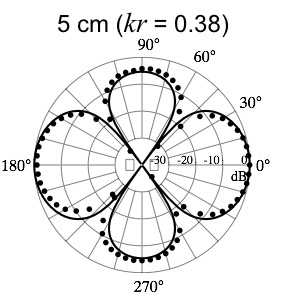 The fundamental vibration mode of a tuning fork radiates sound as a longitudinal (or linear) quadrupole sound source[1] with a well-defined transition between the near-field and far-field radiated patterns.[2,3] The plot at left shows the near-field measured directivity pattern (dots) representing the sound pressure level as a function of angle around the fork along with the theoretical model (curve) for a longitudinal quadrupole.[2]
The fundamental vibration mode of a tuning fork radiates sound as a longitudinal (or linear) quadrupole sound source[1] with a well-defined transition between the near-field and far-field radiated patterns.[2,3] The plot at left shows the near-field measured directivity pattern (dots) representing the sound pressure level as a function of angle around the fork along with the theoretical model (curve) for a longitudinal quadrupole.[2]

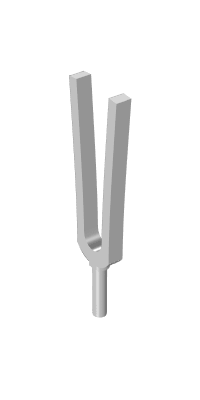
 The fundamental vibration mode of a tuning fork radiates sound as a longitudinal (or linear) quadrupole sound source[1] with a well-defined transition between the near-field and far-field radiated patterns.[2,3] The plot at left shows the near-field measured directivity pattern (dots) representing the sound pressure level as a function of angle around the fork along with the theoretical model (curve) for a longitudinal quadrupole.[2]
The fundamental vibration mode of a tuning fork radiates sound as a longitudinal (or linear) quadrupole sound source[1] with a well-defined transition between the near-field and far-field radiated patterns.[2,3] The plot at left shows the near-field measured directivity pattern (dots) representing the sound pressure level as a function of angle around the fork along with the theoretical model (curve) for a longitudinal quadrupole.[2] 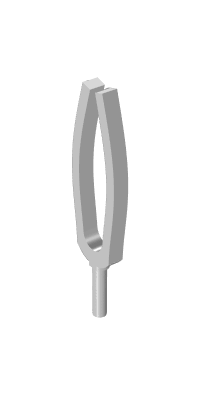
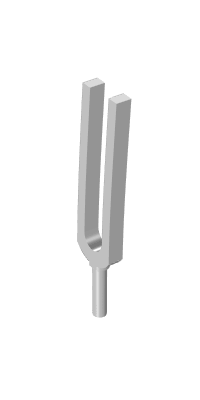
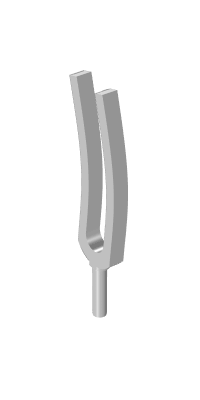
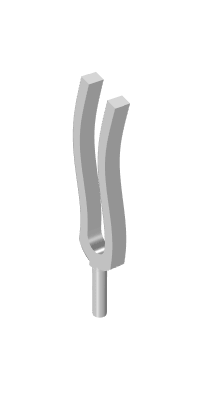
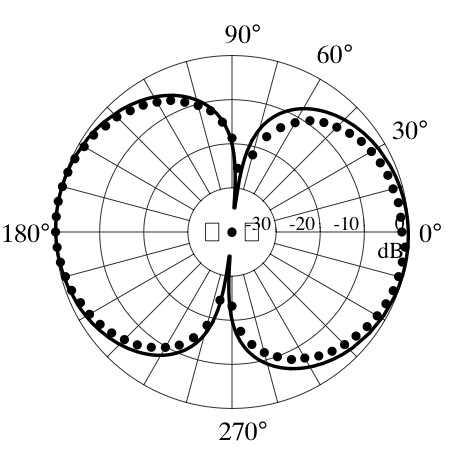 The first in-plane bending mode (385 Hz) radiates sound as a dipole source.[2] The plot at left shows the measured directivity pattern (dots) representing the sound pressure level as a function of angle around the fork along with the theoretical model (curve) for a dipole source.[2]
The first in-plane bending mode (385 Hz) radiates sound as a dipole source.[2] The plot at left shows the measured directivity pattern (dots) representing the sound pressure level as a function of angle around the fork along with the theoretical model (curve) for a dipole source.[2] 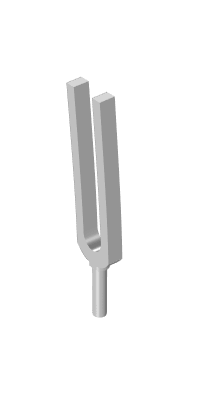
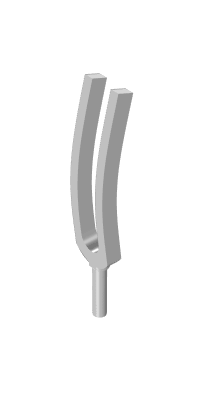
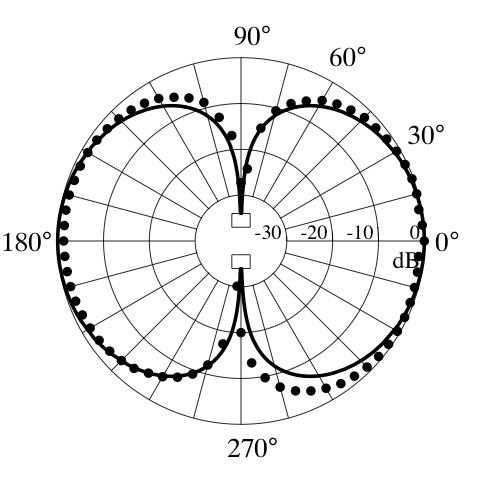 The first out-of-plane bending mode (457 Hz) radiates sound as a dipole source. The plot at left shows the measured directivity pattern (dots) representing the sound pressure level as a function of angle around the fork along with the theoretical model (curve) for a dipole source.[2]
The first out-of-plane bending mode (457 Hz) radiates sound as a dipole source. The plot at left shows the measured directivity pattern (dots) representing the sound pressure level as a function of angle around the fork along with the theoretical model (curve) for a dipole source.[2]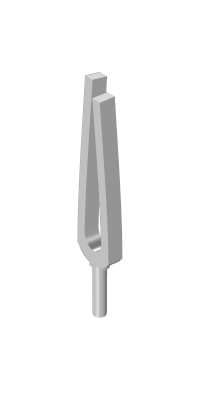
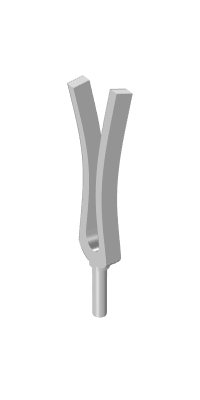
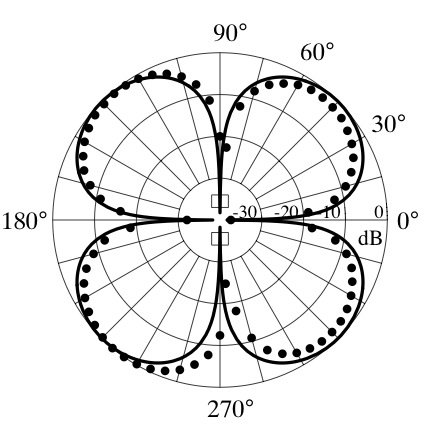 The first out-of-plane bending mode (537 Hz) radiates sound as a lateral quadrupole source. The plot at left shows the measured directivity pattern (dots) representing the sound pressure level as a function of angle around the fork along with the theoretical model (curve) for a lateral quadrupole.[2]
The first out-of-plane bending mode (537 Hz) radiates sound as a lateral quadrupole source. The plot at left shows the measured directivity pattern (dots) representing the sound pressure level as a function of angle around the fork along with the theoretical model (curve) for a lateral quadrupole.[2] 